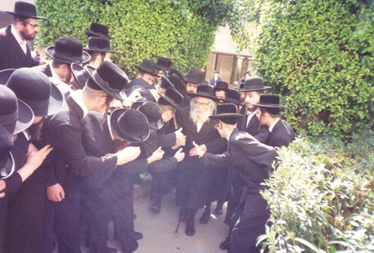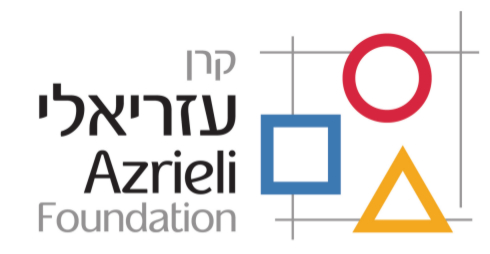In Those Days On This Date
Chapters of history, interwoven into each other, in 6 fascinating segments
Tammuz 5785 (2025)
By: Yaakov Rosenfeld, Ganzach Kiddush Hashem

1.
This week marks the 99th anniversary of the birth of the great and holy Gerrer Rebbe, Rabbi Pinchas Menachem Alter z”l.
The birth of the tzaddik was on Tammuz 21, 5686 (June 9th, 1926), in Falenica, now one of the districts of Warsaw, on the right bank of the Vistula River, in the far southeastern corner of the city.
Until 1951 it was a separate village, after which it became part of Warsaw. Before World War II, Falenica, located in a wooded area, was a popular place for summer homes. Its population numbered about 8,600.
Falenica is located along the main railway line, connecting Warsaw with Lublin.
Rabbi Pinchas Menachem, the youngest son of Rabbi Avraham Mordechai Alter, the “Imrei Emet of Gur” (from a second marriage), was a child prodigy who absorbed much of the Torah, the piety, and righteousness of the geniuses and righteous men of Poland, and acquired treasures of holiness, wisdom, leadership and virtues from his great father, whom he greatly loved and was always with.

A gadol hador’s (righteous man of the generation) love for Torah. Going through his ancient books during the Ten Days of Repentance (between Rosh Hashana and Yom Kippur).

A rare documentation of the Pnei Menachem (Rabbi Pinchas Menachem Alter) as a child, steering the boat (left). The right boat is steered by his orphaned nephew Rabbi Binyamin Menachem Alter z”l. Behind the Pnei Menachem, z”l, Rabbi Tzvi Mayerants is seen holding a child. The pious leader and educator Rabbi Tzvi Mayerants was the father of Rabbi Motel Mayerants z”l. He taught the descendants of the Imrei Emet, and as part of his education, he occasionally took them on trips.
At the outbreak of the Holocaust, as a tender boy, he fled with his father to the Land of Israel. He married Mrs. Tziporah Alter in 5706 (1945-6), and from 5716 (1955-6) he headed the “Sfat Emet” Yeshiva in Jerusalem. He lived all his days in a modest apartment and slept in the yeshiva compound. He was always one of the leaders of Charedi (ultra-Orthodox) Judaism and expressed its principled positions in clear words. Rabbi Pinchas Menachem was a worshiper of G-d, a lover of the Jewish People, great in Torah and compassionate towards the brokenhearted. His years leading the Ger Chasidim as Rebbe, after the passing of his brother, the Rebbe, Rabbi Simcha Bunim – the “Lev Simcha” – in 5753 (1992-3), were short, but they left a strong mark on the time and on future generations. In 5756 (1996), during the period of bloodshed in the streets of the Land of Israel – the era of suicide bombings, his tender heart could not stand the sorrow of the Jewish People. He published a letter of encouragement whose contents resonated throughout the world, and immediately afterward he died suddenly, at the age of 69.
Hours before his departure from this world, he expressed himself to the Rebbetzin:
“The death of the righteous atones. The whole of the Jewish People is in a difficult situation. We need to sacrifice ourselves for the sake of the whole Jewish People. I see that it is difficult to act here; from above it is possible to act much more.” As well, at the Purim meal, and in general throughout the entire period, there was much talk and hints about sacrificing oneself for the sake of the whole Jewish community, and no one understood. His sudden passing on the night when Purim ended, on the 16th of Adar, 5756, shocked the whole Jewish People. On that day, the bloodshed that had been taking place in the Land of Israel at that time stopped.




Dedication to the Jewish People. The Gerrer Rebbe expressed love to Jews of all communities.

Blessing with love
Dedication was the essence of the holy Gerrer Rebbe, and it was the essence of his holy ancestors from generation to generation, and it was the essence of his rabbi, whom his father hired to teach him Torah upon his aliya (immigration) to the Land of Israel, the great Rabbi Chaikel Miletzky z”l, and about whom we will write about in the second part of this article.
2.
Rabbi Chaim Chaikel
On Har HaMenuchot there lies a silent grave with a modest tombstone on it. To the observer, the lines engraved on it may seem puzzling, but anyone who knew the righteous Rabbi Chaikel Miletzky knows that this was his essence.
“Here lies Chaim Chaikel Zeev Miletzky son of Reuven, who suffered most of his days in torment and, due to his many sins, did not reach the level that he could reach.”
Exactly one hundred years ago, in 5685 (1924-5), Rabbi Chaim Chaikel arrived in the Land of Israel, straight from the study halls of the Lithuanian baalei mussar (teachers of morals), under whose shadow he grew up and loved. He was a man of musar in his entire being, a worshiper of G-d, and a great Torah scholar. Miraculous stories surrounded his character. He was sentenced to death several times in Russia for the crime of spreading Torah and running a yeshiva, and was miraculously saved. In the Land of Israel, he served as the head of the Chayei Olam yeshiva, and when the Gerrer Rebbe arrived in the Land of Israel, he hired Rabbi Chaikel to serve as a teacher for the son he had when he was older, Rabbi Pinchas Menachem.
Rabbi Chaikal, born in Slobodka and a student of its yeshiva, opened a yeshiva in Kremenchuk and later in Lubna. He almost paid for this action with his life, as mentioned, but he was a man of dedication.
In the Land of Israel, Rabbi Chaikel lived in the famous Strauss Courtyard (today, 20 Ha’Ayin Chet Street, Jerusalem), where the great men of Jerusalem and its baalei musar lived.
“The Strauss courtyard became a center of Torah and musar in Jerusalem. The famous musar luminaries of the generation who immigrated from Lithuania and settled in Jerusalem lived there, including: Rabbi Yitzhak Blazer, Rabbi Naftali Amsterdam, Rabbi Tzvi Levitan, Rabbi Yitzhak Maltzen and Rabbi Aryeh Leib Broida, brother of the ‘Saba Mi’Kelm.’ The neighborhood’s connection to the musar movement was so strong that they used to jokingly say that the origin of the neighborhood’s name ‘Musarra’ is from the word ‘musar.’ A group of Jerusalem Jews also established their place of study in the courtyard, and they also became known for their perseverance and ascetic and moral practices. Among them were Rabbi Meir Heller, Rabbi Tzvi Hirsch Weisspisch (grandson of Rabbi Nachum of Szadek), Rabbi Shmuel Tefilinsky, Rabbi Yona Ram, Rabbi Eliyahu Baruch Perlman, Rabbi Chaikel Miletzky, Rabbi Yehuda Holtzman, and Rabbi Zelig Leib Levin.” [1]
Who built the Strauss (also called Strois) courtyard?
We will read about the history of the “neighbourhood” and those who built it in the third part of our article.

The genius Rabbi Chaikel Miletzky z”l, a man of self-sacrifice
3.
The Strauss Courtyard
The names of the righteous and geniuses of Jerusalem who lived in the Strauss courtyard and worshipped their Creator there out of holiness and exaltation and with little concern for the affairs of “this world” and its pleasures are known in Torah centres throughout the world. They are heroes of strength in the war of Torah, and the list detailed above is not complete. Missing from it are additional names such as the genius Rabbi Tzvi Pesach Frank and others, who arrived at this courtyard at a later time, and many more of the geniuses of Jerusalem who lived in the Old or “New” city and only set their study day and night in the Beit Midrash (study hall) in the Strauss courtyard. The Shechina (G-d’s presence) was present in the walls of this Beit Midrash, and a feeling of purity enveloped all who visited it, even for a short time.
The Strauss courtyard was built by a dear and special man, a lover of Torah and those who learned it, Rabbi Shmuel Strauss, father-in-law of our teacher Rabbi Yaakov Rosenheim, president of the World Agudath Israel.
Rabbi Shmuel was a member of the Ashkenazi culture, which is Western European Germany, but his heart was drawn to the pure Jewish life of Eastern Europe, and therefore he became close to the “Saba Mi’Klem” Rabbi Simcha Zissel Ziv, and even donated a large sum to the “Beit HaMusar” (Musar Centre) in Kelm.
Rabbi Shmuel Strauss, whose cradle was among the cultural figures of Germany and from whom he received his education, became an ardent admirer of the Jews of the Eastern European shtetl, and in 5644 (1883-4), after the death of his wife, he sent his teacher and rabbi, the tzaddik (righteous) Rabbi Yaakov Shor z”l to Jerusalem to build apartments there for the Torah scholars and to house them there free of charge.
Rabbi Yaakov Shor, who has always championed the path of chassidism and walked its paths with devotion and faith, arrived in Jerusalem, and after thorough consideration, decided to establish this neighborhood specifically for the people of musar – the Lithuanians in Jerusalem.
Who was the “Genius of Kitov,” Rabbi Yaakov Shor, and what was his connection with the Ashkenazi philanthropist from the city of Karlsruhe in Germany? More on this in the next chapter, in honor of the 101st anniversary of his passing, in the summer of 5686 (1926), and not before we tell what the “self-sacrifice” of the philanthropist Rabbi Shmuel Strauss was, before he became rich, because of which he was able to support Torah and its learners on such a large scale.
In the last chapter, we will tell a little about the Jewry of Karlsruhe, the city of the “Korban Netanel” and the “Aruch Le’Ner”, and about its terrible destruction eighty-five years ago.
To be continued, G-d willing.
[1] Wikipedia.












